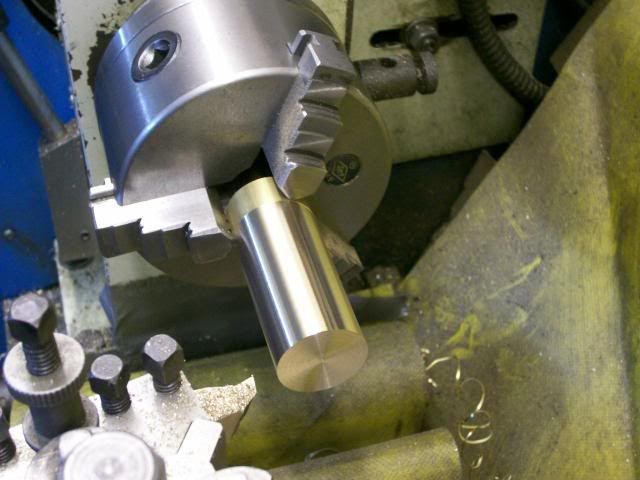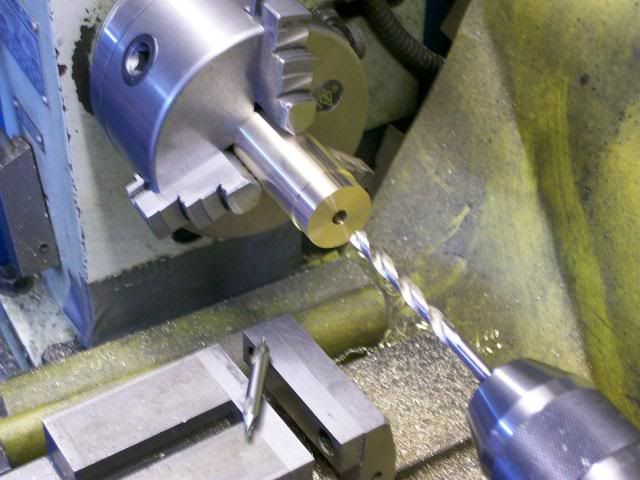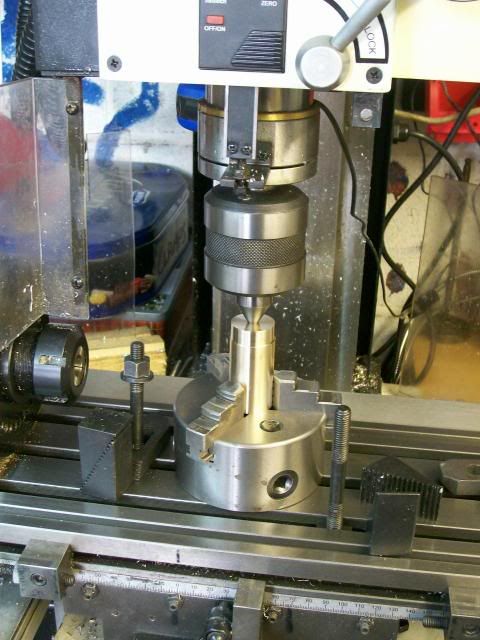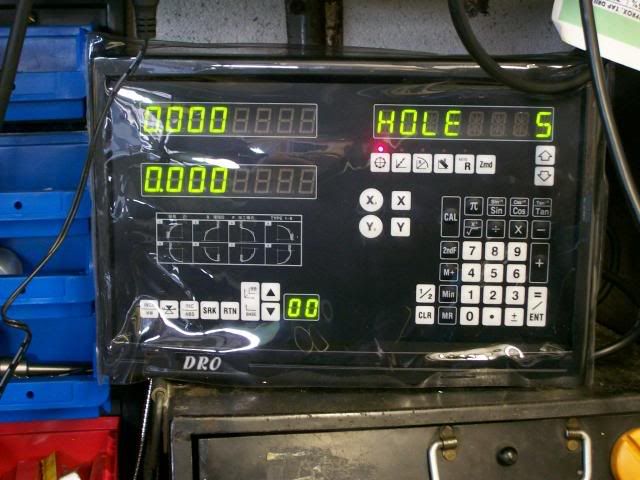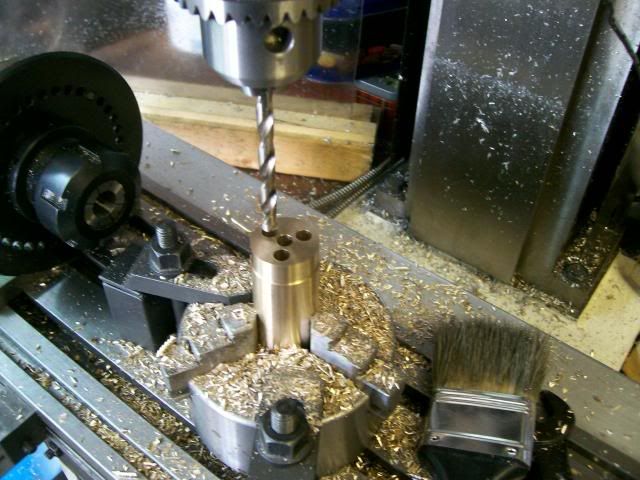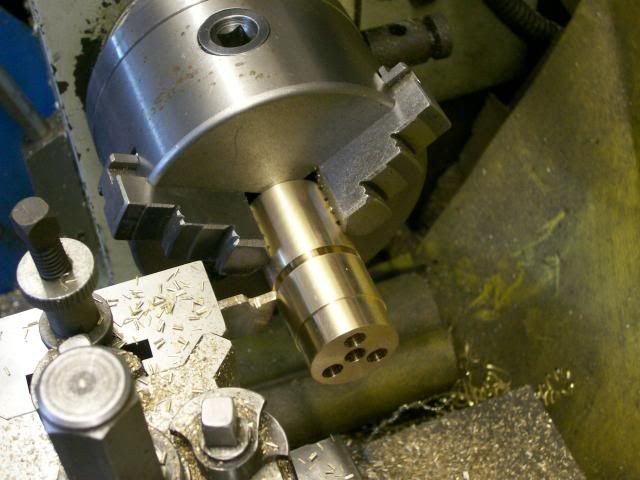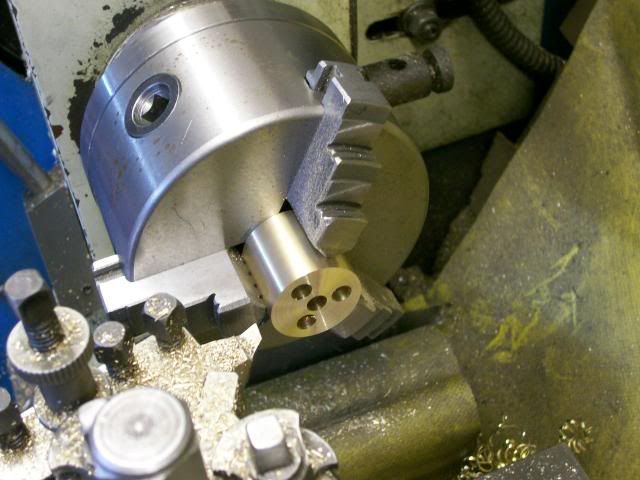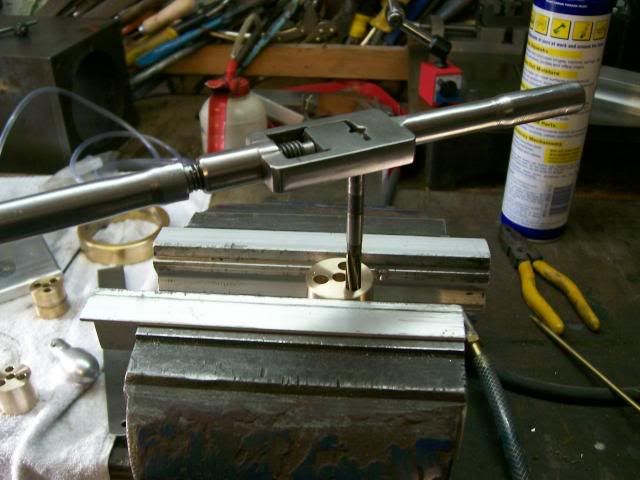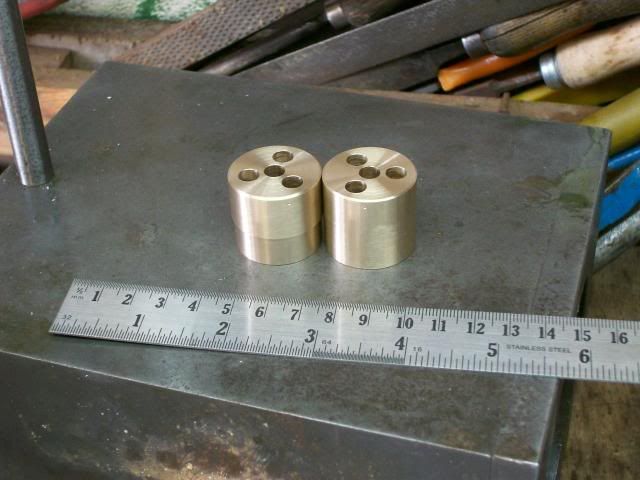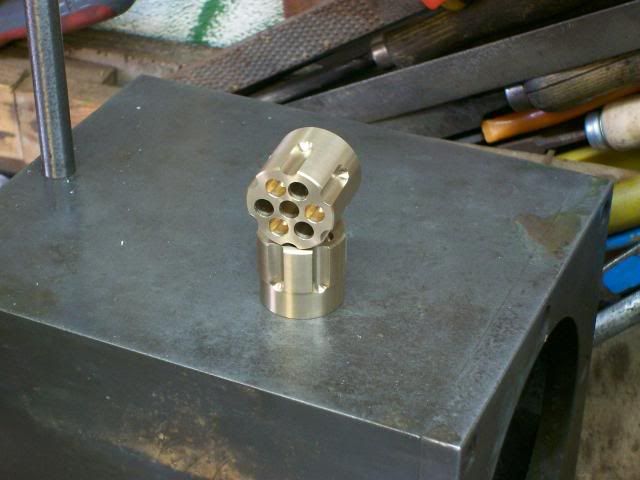Hi Chaps
First an appology to any one whose down loaded the drawing, some of the notes on sht 1 and 2 are very badly writen, I didn't proof read the drawing before I posted because I was tearing my hair out trying to save a good pdf copy of sht 5 on the cad system the drawing is fine but when I safv it to a PDF it misses great chunks out, I was messing arround trying to get it sorted for best part of a day even resorted to completly redoing the drawing, in the end I just posted what I'd got out of frustration, perhaps some of you computer Gorues know what hapening.
I've since sorted out sht 1 and 2 attached but sht 5 is beating me.
Any way as a bit of therapy I've made the new cylinders for the rebuild of No 1 and thought I'd share my method with you so her we go:-
Skim up a 2 1/4" length of brass enough for two cylinders and face and part off.
Grip in the chuck and get running true this is not to critical within a couple of thou will be fine.
Face up, Turn step for fly wheel, centre drill and drill right through with a letter D drill 0.246 dia.
You can do the next bit with a rotary table similar procedure, but I'm going to take advantage of the Pitch Circle Feature on my DRO so:-
Keeping the job in the chuck transfer over to the mill, centre the hole with the quill using a centre.
Clamp chuck to table.
Set up the PCD feature on DRO
Centre drill then drill letter D right through, the key to drilling long holes straight is having a machine with good bearings, a nice sharp drill, and not forcing the drill through take your time keep clearing the swarf, if you force it the drill will wonder.
Keeping the job still in the chuck transfer back to the lathe, face and part off:- dont forget to mark the cylinders so you can assemble them in the same orientation as they were drilled.
Face to length and chanfer the out side face.
Run a 1/4 hand reamer through to size the bores this will just take a whisper off.
Her they are done
And with the bling I've got no 1/4" balls for the shells.
Cheers
Stew
View attachment Elbow Sht 1-Model.pdf
View attachment Elbow Sht 2-Model.pdf

